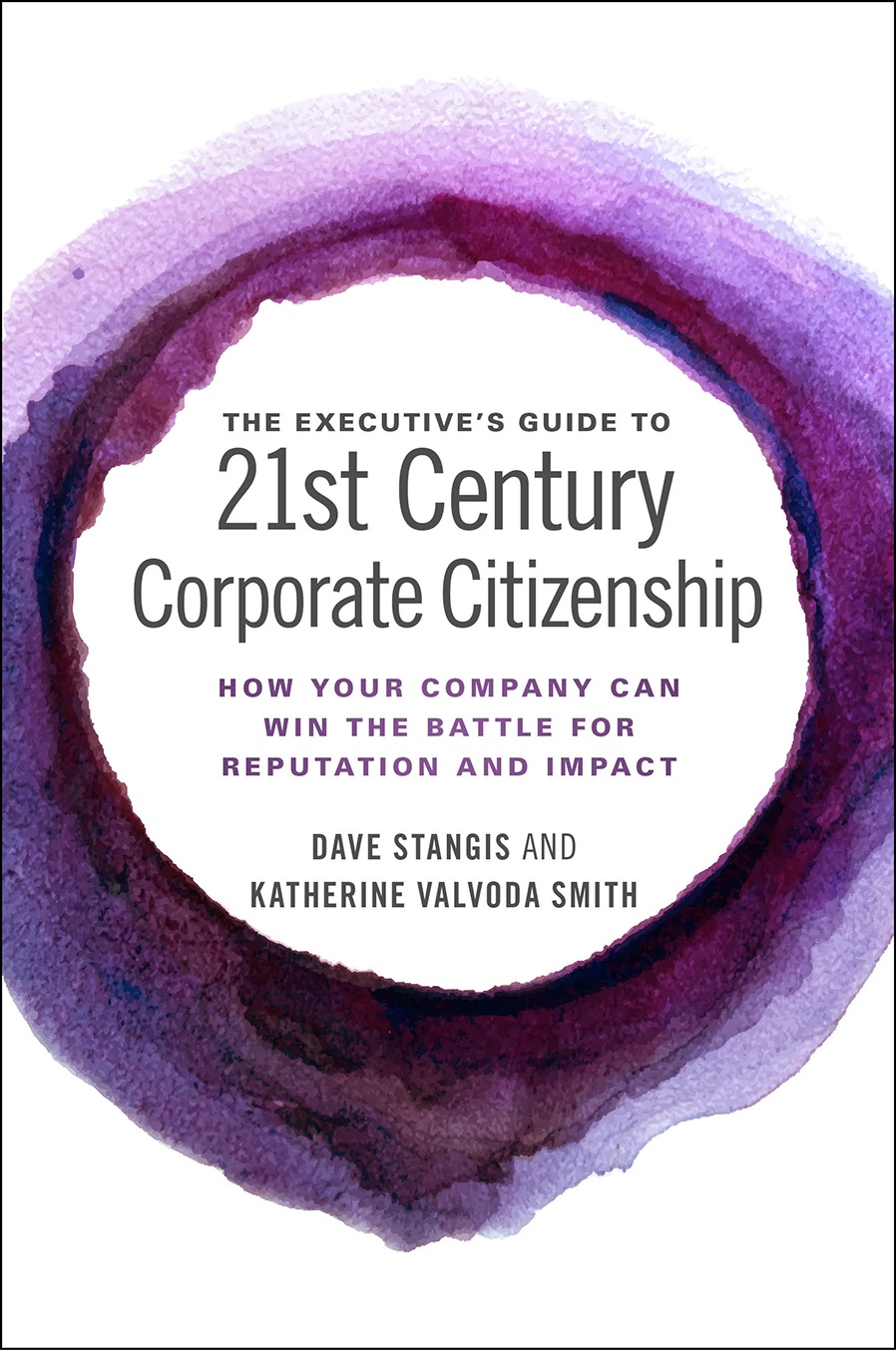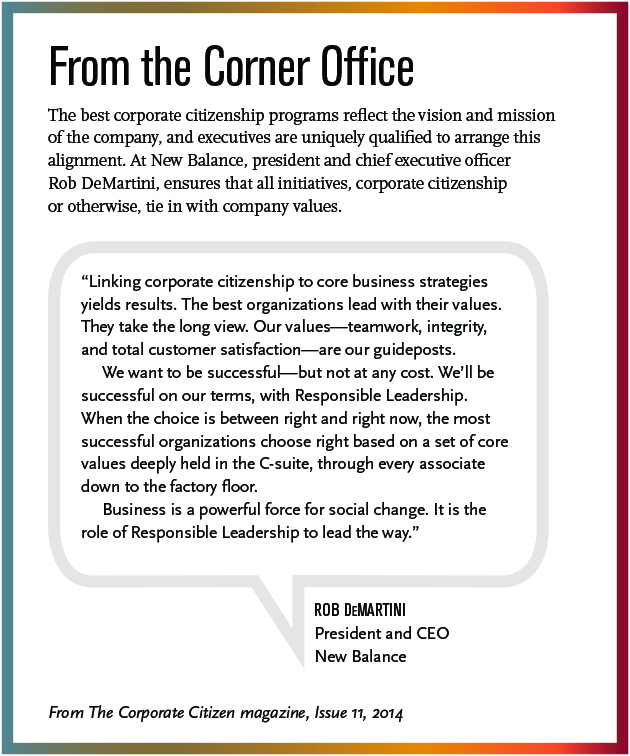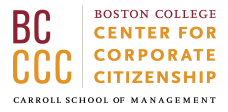The Executive’s Guide to 21st Century Corporate Citizenship: An Excerpt
- Tue Sep 05 15:49:16 UTC 2017
- Katherine V. Smith

View all resources on Responsible Corporate Leadership >
For more than a year, Dave Stangis—Vice President of Corporate Responsibility and Chief Sustainability Officer for the Campbell Soup Company—and I have working together to help corporate citizenship professionals align environmental, social, and governance (ESG) objectives with business goals to create long-term success. Our first book, released earlier this year, served as a step-by-step handbook for developing and implementing effective corporate citizenship programs.
Now, we’re pleased to share a second book—a guide for the business executive who is working to build a more ethical, resilient, sustainable, and profitable company. Titled The Executive’s Guide to 21st Century Corporate Citizenship, the book provides the information needed to understand how corporate citizenship builds reputation, delivers value to the bottom line, and mobilizes an organization’s employees and customers.
The Executive’s Guide is now available. Here, you’ll find a condensed excerpt from the book detailing the importance of aligning your efforts with your business purpose.
Connecting corporate citizenship to business purpose
What’s the purpose of your company? Stop and think about that for a moment. Perhaps your company has a “Mission” or “Vision;” but a purpose is different. Why was it originally created, even if that was many years ago? This can be an interesting question to ask, and a difficult one to answer. There’s a very good reason to make the effort. In the process of exploring these issues, you’ll learn how to design a corporate citizenship strategy and program that is relevant, comprehensive and–most importantly–that works.
All successful businesses were created originally to fill a market need or solve a societal problem. This is the core of purpose. The purpose of your company could have been to make life more convenient, to provide something essential, or even to create an exciting experience. Depending on how long your corporation has been around it may still be providing that same solution; alternatively, the company may now be selling products and services that address problems that did not exist at your founding with solutions that were unimaginable. At its core a successful company delivers something to the world that only it can provide in its distinctive way. It’s a special point of differentiation from its competitors. Purpose is the reason your company was created and exists today. It is related to vision and precedes strategy. When you have your company’s core purpose clear, it should guide your corporate citizenship.
It’s not always easy to uncover this core purpose, but if you can get it right you’ll have a solid foundation that provides the justification and boundaries for your business strategy and corporate citizenship program. What’s more, unlocking a company’s core purpose can unleash many new ideas, helping you to think more imaginatively and broadly about how corporate citizenship can contribute to your company’s purpose and unique ideal. Your company’s purpose is here to stay, representing the value it provides to your customers year after year. It’s not a program or a campaign, it’s for life.
Business purpose, vision, and strategy
By the way, if you’re wondering what the difference is between a company’s purpose, vision, and strategy, it’s this: purpose is the motivation for all it does; vision is a vivid, easily communicated image for how the world will be different if it’s successful in achieving its objectives; and strategy is the plan of action for how it will compete in the market to achieve this vision. Purpose is the reason you’re undertaking your strategy, and usually doesn’t change. Purpose informs decision making and promotes systems-thinking. Strategy changes as customers, consumers, and markets evolve. Later on we’ll look at strategy in more detail; for now, just know that it springs from your corporate purpose. One of your key jobs as a corporate leader is to set the vision for where the company will go and to communicate it in ways that inspires action among your people. The behaviors that you reward—both what is done and how it is done—establish the culture of your company.
How does your corporate citizenship program support your company’s purpose and strategy?
Your company has a core purpose, and so does your corporate citizenship program. Can you describe what it is? How would your company’s customers describe it? What would your employees say about it? How about your suppliers, investors, and other stakeholders?

You can sit in your office and ruminate on this, or you can tap into the wisdom of your team. Ask what success would look like for them. Their words are important here, as they will likely use different terminology than you. A subordinate they might say, “I love coming to work because what this company’s doing is making a real impact.” An investor on Wall Street would never say, “Well, it’s great they have a robust volunteer program.” They may, however, note your company has a low staff turnover and does a great job of managing its people. Does your corporate citizenship investment contribute to that strength? Data tell us there is a strong positive correlation of volunteerism and employee engagement with low turnover, so you probably do contribute to the Wall Street investor’s assessments of the quality of management and stability of the company[i].
To inspire people you need to paint a vivid picture of your corporate citizenship strategy, and how you intend to fulfill and measure it. At this stage you’re simply collecting information; imagine you have a pile of “corporate purpose” on your desk, and a stack of “what I’m going to do about it”. You also have a collection of words and images to describe your purpose to the people that matter—your team, your board, your customers, your suppliers, your community.
What makes your company unique?
Remember when we talked about what makes your company different and special at the beginning of this chapter? You may have wondered what this means for the corporation you work for.
There are thousands of service companies, hundreds of food companies, and dozens of automotive companies and airlines, but it’s what they each do differently from the others that gives them their competitive advantage—their differentiation. Are products offered faster? Are they more innovative? Do they offer unique or more features? Are they less expensive than competitors? It’s not just what they provide … it’s how!
What makes your product or service special? If you’re a retailer, you may describe your stores as the most welcoming place in the world to shop for high-end goods. Your shoes may be the ultimate in low-priced but high-fashion items—or you may employ a buy-a-pair/give-a-pair strategy. To determine what makes you unique sounds simple but it can be really hard to answer; even large leadership teams sometimes have a difficult time answering this question.
View all Responsible Corporate Leadership resources on the topic page:
* All of the profits of both The Executive’s Guide to 21st Century Corporate Citizenship and 21st Century Corporate Citizenship will benefit the Boston College Center for Corporate Citizenship. Buy now on Amazon.
[i] The Boston College Center for Corporate Citizenship. (2015). Community involvement study 2015. Boston: Boston College Center for Corporate Citizenship.

